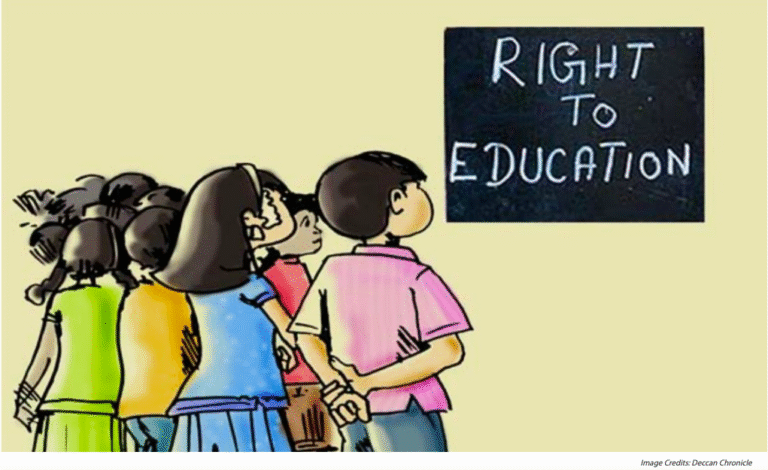

For one reason or another, some children do not develop social skills as easily as others. They may earnestly seek peer relationships and then, having endured rebuffs, if not downright cruelty, retreat to the safety of home, family, and their own company.
There is probably nothing so painful for a parent as the rejection of his child. Parents need to take the long view of social problems and to map out a plan to solve them quite as carefully and thoughtfully as they would consider academic or health problems. There are guidelines which if followed, will help these children if the parent is willing to take time and initiative.
Social Milestones
All children go through definitive phases of social development. The infant or very young child plays alone quite happily, babbling to himself and occasionally sharing a treasure with mother or father. If another child wanders onto the scene, he is likely to get clonked with a block or pushed out of the circle of play.
Next comes the period when a child is able to play with one other child, and this includes an element of adjustment to the idea of sharing, of taking turns, of going ” first” or “last.” This is a bumpy road. fraught with failure, and the wise parent remains unshaken when Johnny’s playmate goes home in a huff or when Johnny barges in the door crying. “I hate Tommy. I wish he wuz dead. I’m never gonna play with him again!” Of course, in all likelihood Johnny and Tommy will be playing together in idyllic fashion within the hour.
Eventually the group grows larger-to three children and to four-and by the time the child enters kindergarten, he is able to join and to enjoy group experiences and to take his lumps with the others.
Social Programming
There are times when a parent must reach out for help, and it is generally the mother, who, faced with this assignment, is going to have to scan the available candidates in the neighborhood and to select a child who would make an appropriate playmate. Gender is not an issue. At this age and under these circumstances boys and girls play equally well together.
It is wise for her to approach the child’s mother and explain the situation. She is asking to “borrow” the youngster for a supervised visit in her home.
Bribery is quite acceptable here. She can make it a special occasion-lunch or a tea party. Refreshments may be served first, and then the youngsters may have a short play period. (Emphasis on short.)
The moment either child shows signs of boredom or restlessness, the visit should be brought to an end. The first visit must culminate on a happy note if more are to follow.
As these one-to-one visits become more commonplace, mother can structure a simple activity which the children can handle without her-such as blowing soap bubbles or playing with clay. If the activity goes well, she should fade into the woodwork for five or ten minutes, keeping well within earshot so that she can step in if the going gets rough.
The Next Step
Eventually, if things continue to progress well, the young child should be allowed to try a short visit to the neighbor’s house. This also must be structured. The mother should accompany the child to the appointed place and make arrangements to pick him up at a specified time, suggesting that she be contacted by phone if the visit needs to be terminated earlier. She should not drop Johnny off and head for the nearest grocery store.
There is a strong possibility that he may panic during his first giant experience and decide that he wants to go home “right now!”
Gradually, de-structure can take place. Perhaps the mother will need only to walk her child to the corner and watch while he travels the rest of the distance alone. Finally, the child may be allowed to go all by himself. making a phone call to his mother when he reaches his destination. Of course, hopefully, social development and chronological age will continue until such time as the child can come and go to his friend’s house as he chooses, without the wearisome planning. Spontaneity, after all, is a great part of the pure joy of children’s play.
A note of caution: In these hazardous days, parents are well advised to be cautious about letting a child walk from one house to another even in the immediate neighborhood. One mother solved the problem by “shadowing” her child, hiding behind a tree or a fence.
The child thought he was making the journey alone and grew in self-confidence while the mother could be sure he had reached his destination safely.
Group Play
It is now time to enlarge the child’s group, and the experience repeats itself, with mother structuring initial group contacts and standing alert to terminate them if the play session begins to deteriorate. Group play, for some reason, seem to hold a greater possibility for disaster than one-to-one play. Children tend to “gang up” and take sides. But this, too, can be circumvented if the parent is creative and innovative.
Nothing is quite so effective as a quick and attractive change of subject. (It’s called an ace in the hole!) “Who wants to help me bake cookies?” or “Who knows how to wash a car?” will work wonders.
Inappropriate Language
Youngsters sometimes experiment and use language inappropriately, including highly unacceptable profanity, the meaning of which they probably don’t know. How to handle such situations? Firmly and immediately! Letting it go until a later time means that the correction will lose its punch and impact. What is needed is a strong (without anger) statement-e.g., “That is not the way we speak in out family.” That is all that is necessary and makes it possible to correct the child without “putting him down” in front of his friends.
Inappropriate Action
The same principle applies as above. Pushing, shoving, hitting or outright inappropriate “pranks” need to be handled on the spot. No lecturing. “I’m putting you in your room because you shoved Tommy” may be all that is necessary. No “Why did you do that?” et cetera, which only belabors and clouds the situation and misdirects the thrust of the corrective action. Yes, there will be times when your child had to take defensive action-and you can deal with such situations by curtailing interaction with a specific youngster who may indeed be taking advantage of your child’s vulnerability.
Working with the Teacher
All of the social interaction you have provided for your child will spill over into the school situation, and you can be sure that teachers will be very grateful. (Too often the child reaches the classroom totally untutored in social relationships, and the teacher is expected to do the job.) Most teachers will react favorably to a request for a conference on social needs. This is the time to explain what you have tried to do on the home front. You can discuss your child’s needs for a special friend.
After becoming familiar with the personalities of the youngsters in her class, perhaps the teacher can arrange to team your child with another child of similar disposition and interests in terms of seating, play-pairs, playground-pairs and even walking to and from school. To return the favor, you may want to volunteer for special events (class parties, plays, et cetera) for your child’s class.
During the period of social growth there will be minor triumphs, but the road will undoubtedly be rutted with an occasional major disaster. Parents should not be disheartened. Children tend to have spurts of physical, intellectual, and social growth laced with periods of holding their own or even periods of regression.
The key words are structure and fun, with simplicity. The key attitudes are warmth and optimism. And if you treat your child like a worthwhile human being. it is much more likely that other children will also sense his worth.
Special Needs Children
Children with ADHD and learning disabilities may need extra help in developing social skills. The Impulsivity and the short frustration tolerance of an ADHD child can lead to poor peer relationships.
Children with poor attention and concentration fail to tune in to the social cues in their environment and thus don’t learn social skills through experience. Children with learning disabilities may have difficulty processing information form the social environment or have difficulty with self-expression.



